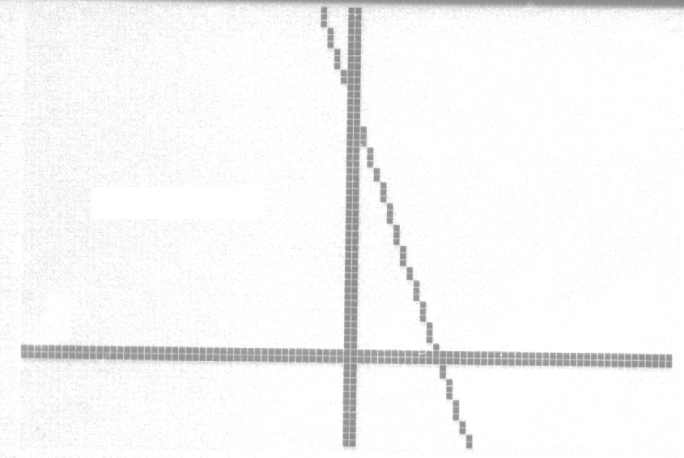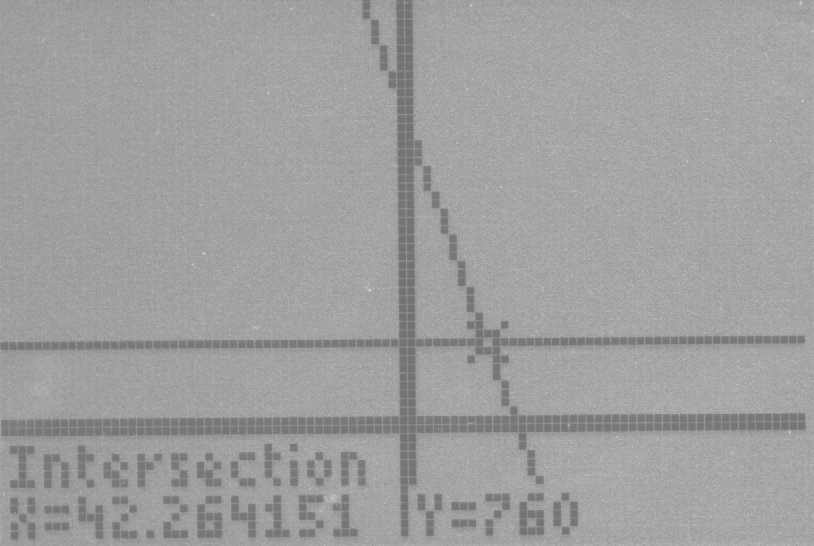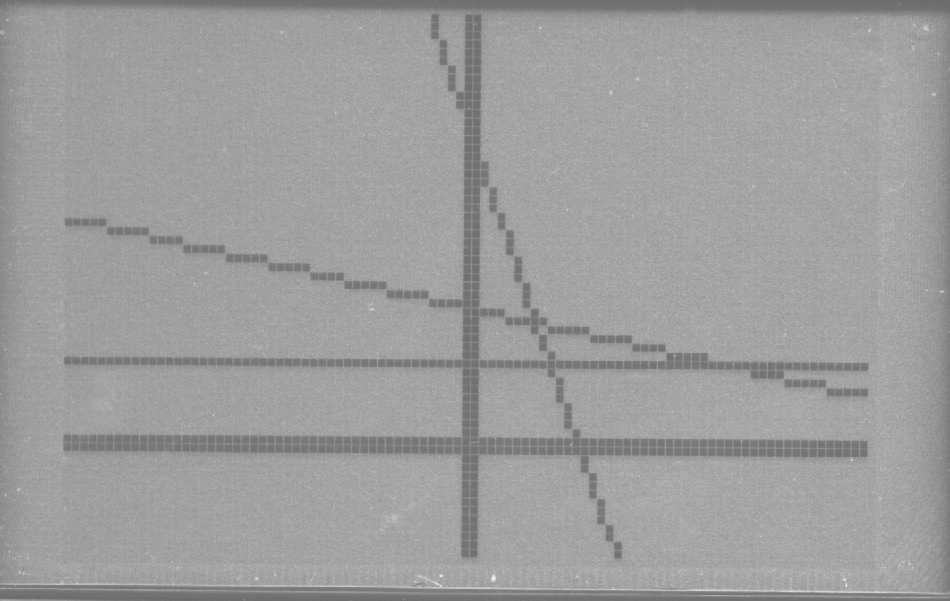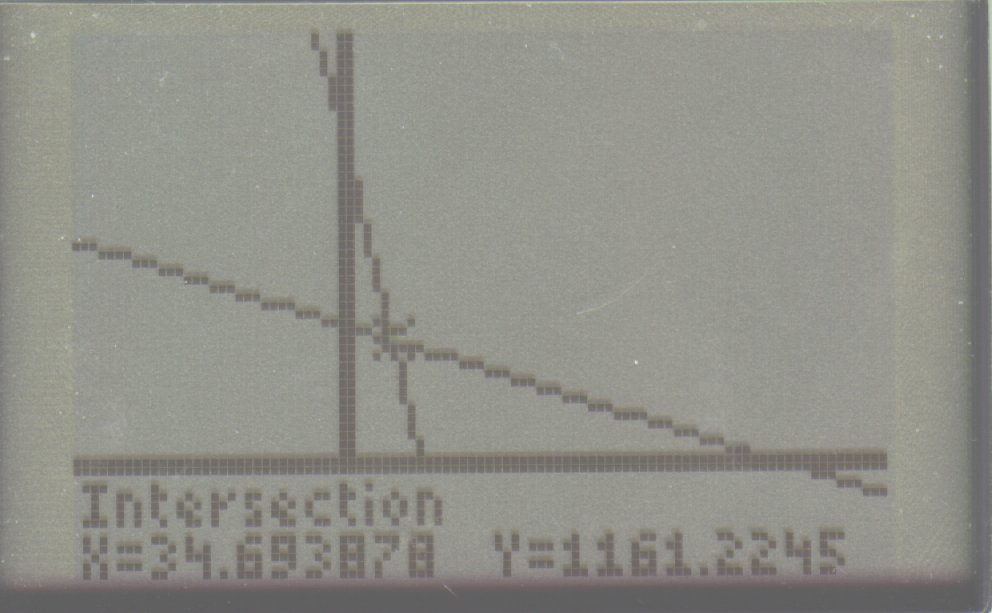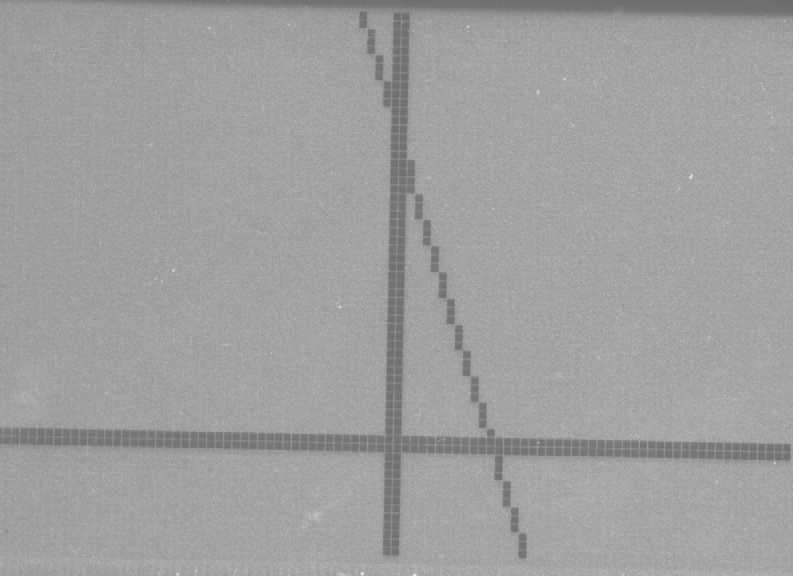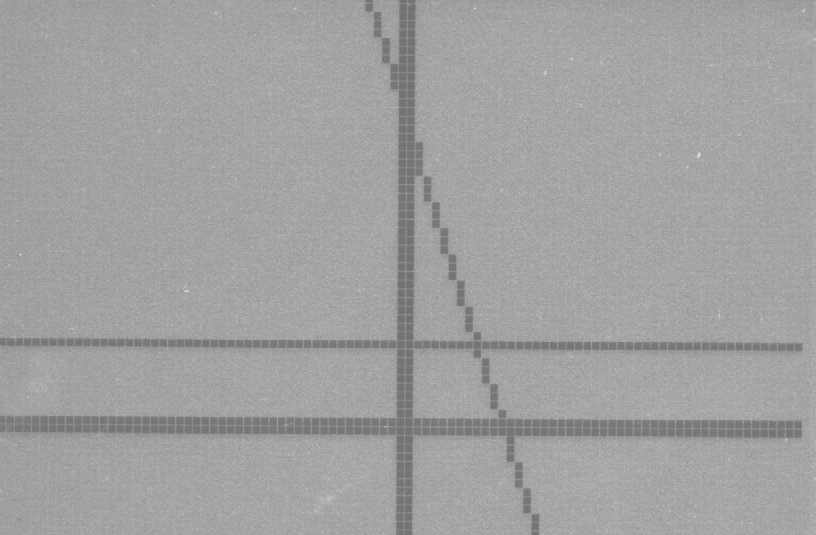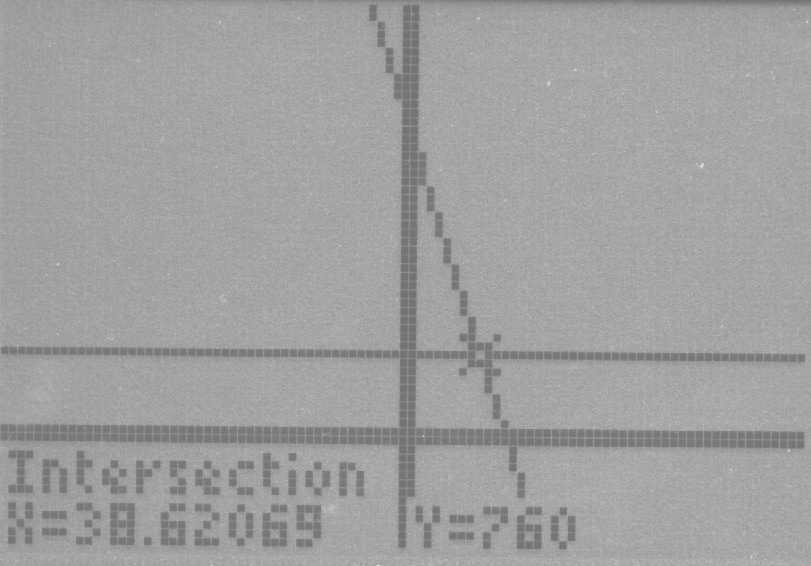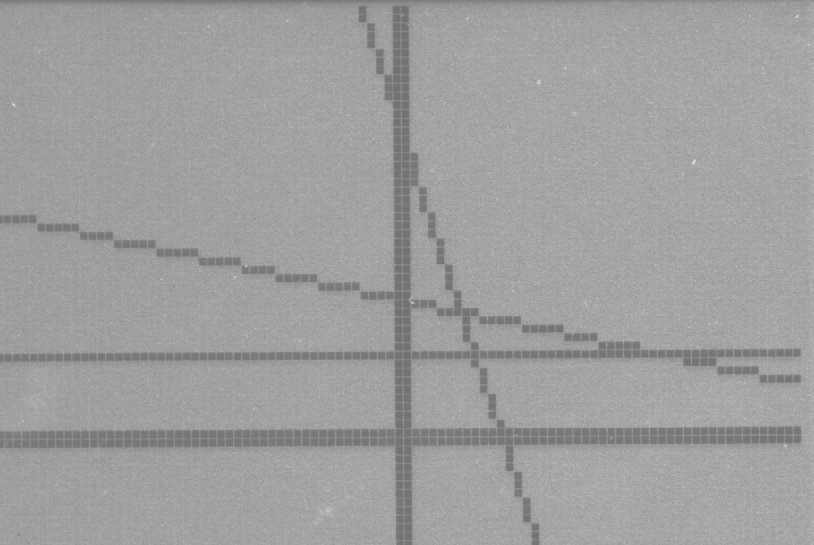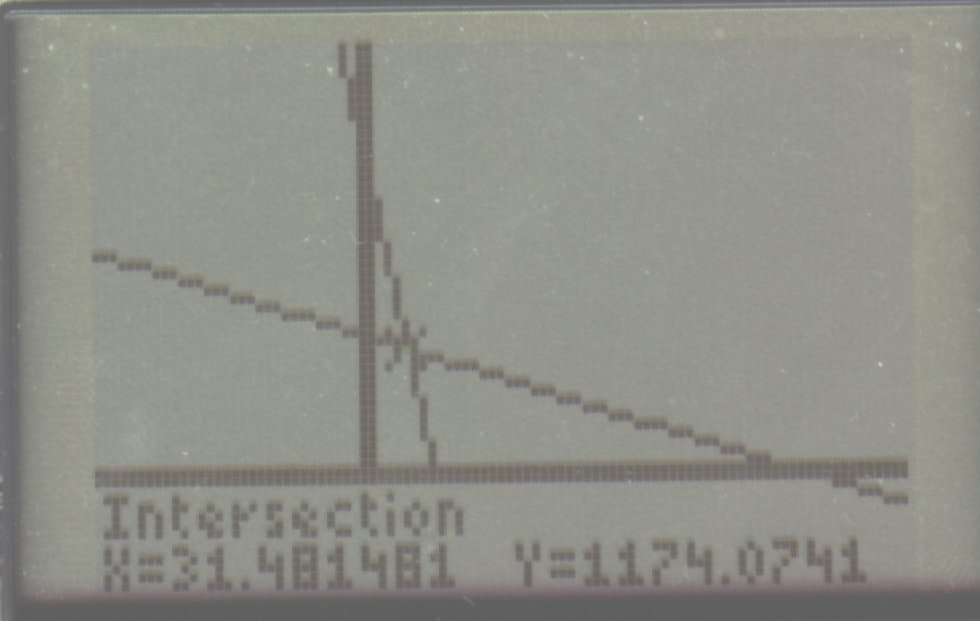|
The Mathematics of Skydiving |
||
The Spread Stable position 1(a)y=mx+b (the equation of a linear equation)
The equation would be:
The graph of this line would look like the following:
(This picture was scanned directly from my TI-83 Plus calculator. Handy little device isn't it?) (b) y=760 The graph of this line would look like the following:
This line represents the minimum altitude a skydiver must deploy his or her parachute to ensure a safe deployment of their parachute. (c) The intersection point is: (42.3, 760) This point represents the time and altitude the skydiver must deploy his or her parachute while in the spread stable position to ensure a safe deployment. The point is shown on this graph:
(d)
x values of the intersection point - y intercept 2(a)descent velocity of 4 m/s The graph would look like:
(b) I experimented with many values for example, 1500, 1200, and 1300 I decided to choose 1300 just because it was between those and it seemed to be the most logical at the time. (c) Intersection point of -4x+1300 and -53x+3000 is (34.7, 1161.2)
(d) The height at which the skydiver deployed his parachute was 1161.2 meters. (e) The x intercept is: 0
= -4x+1300 x=325 It would take 290.3 seconds to reach the ground once the diver has deployed his or her parachute.
|
The Dive Position
1(a)y=mx+b (the equation of a linear equation) Terminal Velocity is 58 m/s Free Fall begins at 3000 The equation would be: y=-58x+3000 The graph would look like this:
(b) y=760 The graph of this line would look like this:
This line represents the minimum altitude the skydiver must deploy his or her parachute for a safe deployment. (c) The intersection point is: This point represents the time and altitude the skydiver must
deploy his or her parachute while in the dive position to ensure a safe
deployment.
(d)
x values of the intersection point - y intercept
Free fall time in the dive position is 31.4 seconds. 2(a)descent velocity of 4 m/s The graph would look like:
(b) I experimented with many values for b but I decided on 1300. The other values I tried were 1500, and 1200. I decided to choose 1300 because I felt that it seemed to be the most logical line comparing to the others. (c) Intersection point (31.5, 1174.0)
(d) The height at which the skydiver deployed his parachute was 1174.0 meters. (e) The x intercept is: 0
= -4x+1300 x=325 It would take 293.5 seconds to reach the ground once the diver has deployed his or her parachute.
|
|
